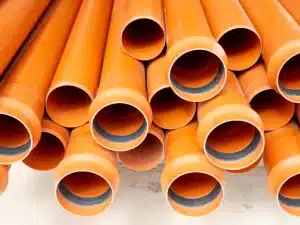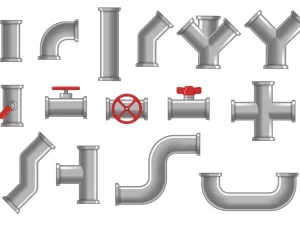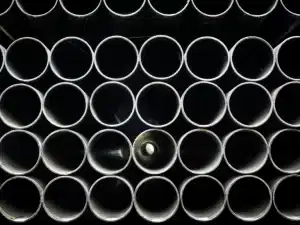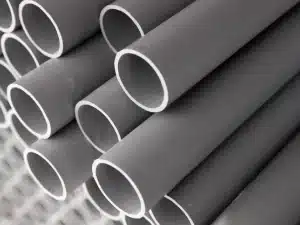How to Select the Right Flange for Your Pipeline System
Pipelines work silently, carrying water, oil, gas, and chemicals. However, the reality is that any pipeline system is only as good as the seals that hold it together. This is exactly the role that flanges play. Selecting the wrong flange can lead to leakage, safety issues, and costly downtime. The right choice ensures the system operates optimally for many years. Simple enough, right? However, there are many varieties available for selection, and it can at times feel like you are playing a game of chance. This is exactly the reason flanges suppliers are invaluable.
Why Flanges Matter More Than You Think?
Flanges are like the link that connects two parts of a pipeline. A strong link keeps everything steady and secure. A weak one? Things can slip, and the connection won’t hold for long.
Flanges:
- Hold the system together.
- Allow easy inspection and cleaning.
- Make repairs less troublesome (no one wants to cut open a pipeline unnecessarily).
Even the most expensive tubing systems wouldn’t work correctly without them. And that’s why selecting the right flange is so much more than just a technical specification. The right one can cut costs, avoid complications, operate efficiently, and avoid expensive unplanned downtimes.
The Main Types of Flanges You’ll Come Across
Flanges are not “one size fits all.” Each type is meant for a particular application. The first time you step into a warehouse, you come across fittings and tubing systems with various options, which can be confusing and somewhat overwhelming. The following are a few of the most common flanges.
- Weld Neck Flanges – Perfect for high-pressure jobs. Their long neck adds strength, reducing stress at the joint.
- Slip-On Flanges – Easier to install and affordable, though not as strong as weld necks. Great for low-pressure systems.
- Socket Weld Flanges – Compact and reliable, often used for small-diameter, high-pressure pipelines.
- Blind (or Blank) Flanges – Close off the end of a pipe. Blank flanges suppliers usually recommend them when you need a temporary or permanent stop.
- Lap Joint Flanges – Handy when alignment is tricky. They allow more flexibility but aren’t great for high-stress jobs.
- Threaded Flanges – No welding needed. Useful for systems where welding might be unsafe.
Factors to Consider Before Selecting a Flange
Flanges are technical, and small mistakes can mean big problems later. Here are the factors to consider before selecting a Flange.
- Material compatibility: Are your pipes carbon steel, stainless steel, or something else? The flange must match.
- Pressure rating: Will the system handle low pressure or deal with intense loads? This decides whether you need a lightweight slip-on or a heavy-duty weld neck.
- Temperature range: Some flanges warp or lose strength at extreme heat. If you’re dealing with hot oil or steam, don’t compromise.
- Size and dimensions: Even a few millimeters off can mess up the connection. Precision matters.
- Corrosion resistance: Especially for offshore or chemical industries where saltwater and harsh fluids are involved.
Ask yourself: what’s the worst that could happen if the flange fails? That usually tells you how careful you need to be.
Why Working with Reliable Suppliers Matters?
Reliable flanges suppliers do more than just sell metal rings. They:
- Test and certify products.
- Provide material traceability.
- Help you match flanges to your system specs.
- Stock different standards (ASME, DIN, JIS, etc.).
And when it comes to blank flanges suppliers, the good ones will guide you on whether you actually need a blind flange, or if there’s a smarter, more cost-effective option. It’s not just about selling; it’s about preventing costly mistakes.
Common Mistakes People Make When Choosing Flanges
Here are mistakes you’ll want to avoid:
- Ignoring pressure ratings and ending up with leaks.
- Mixing materials — carbon steel pipes with stainless steel flanges (hello, corrosion).
- Skipping standards and buying flanges that don’t meet international requirements.
- Overlooking the environment — water, chemicals, or heat can all shorten a flange’s life.
These mistakes aren’t just costly; they’re dangerous. A pipeline failure isn’t something you want on your watch.
How to Work with Suppliers Effectively?
Here’s a practical tip: don’t treat suppliers like just another vendor. The best ones act like partners. When dealing with flanges suppliers:
- Share your project details openly.
- Ask for material certificates and pressure test results.
- Request advice; they’ve likely solved similar problems before.
- Compare multiple options before finalizing.
Before buying the blank flanges, clarify whether you need a temporary closure or a permanent block. This saves you from unnecessary purchases.
Quick Checklist Before You Buy
Sometimes it helps to have a “cheat sheet.” Here’s one for flanges:
- Do I know my pipeline’s pressure and temperature limits?
- Have I checked the compatibility of materials?
- Does the flange match the pipe size and standard?
- Am I considering long-term durability, not just upfront cost?
- Did I consult with a trusted supplier?
If you can tick all these, you’re in good shape.
Conclusion
At the end of the day, choosing the right flange isn’t rocket science. But it’s not guesswork either. It’s about balancing technical details with practical decisions.
Don’t rush it. Whether you’re sourcing through experienced flanges suppliers or consulting blank flanges suppliers, take time to ask questions. The right choice means fewer breakdowns, safer operations, and peace of mind knowing your pipeline system won’t surprise you at the worst moment.
Because honestly, in this business, surprises usually mean leaks. And no one wants that.







